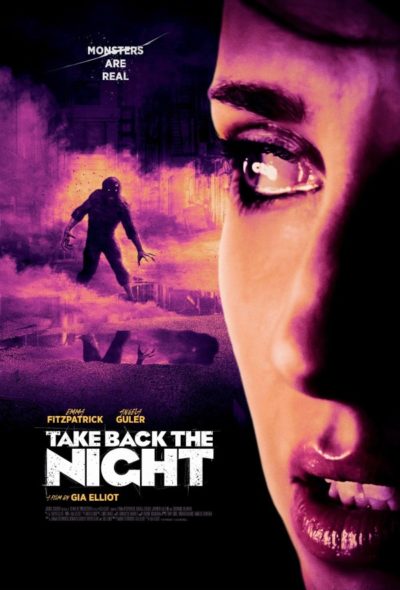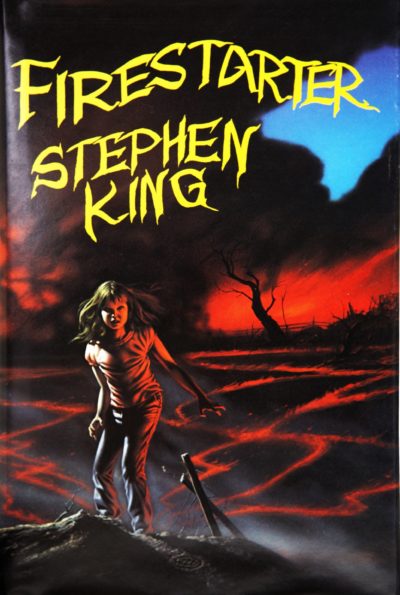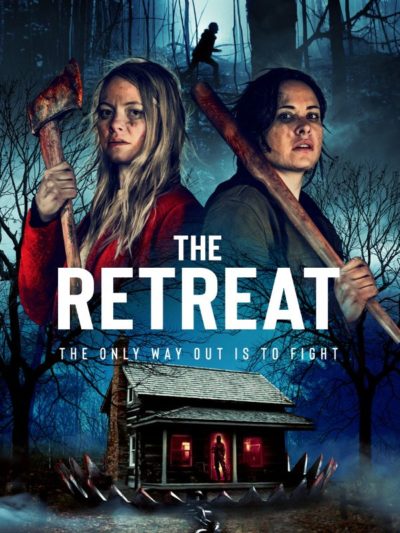★★★
“There will be Blood“
 This is part of the Blood universe, which previously gave us anime series Blood +: Episodes 1-25 and Blood: The Last Vampire in both animated and live-action versions. That’s small beer compared to the Blood-C segment, which began as a 12-episode anime show, subsequently becoming two manga series, a novelization, a stage play, and three live-action movies. The other two, set in the current day and entitled Blood Club Dolls 1+2, aren’t of interest here despite their title (and aren’t very good), since at least the first only includes a brief cameo by Saya, the heroine of the series. Her role here is considerably more substantial, and it’s basically a better production all round. Not least because most of it works reasonably well with no prior knowledge.
This is part of the Blood universe, which previously gave us anime series Blood +: Episodes 1-25 and Blood: The Last Vampire in both animated and live-action versions. That’s small beer compared to the Blood-C segment, which began as a 12-episode anime show, subsequently becoming two manga series, a novelization, a stage play, and three live-action movies. The other two, set in the current day and entitled Blood Club Dolls 1+2, aren’t of interest here despite their title (and aren’t very good), since at least the first only includes a brief cameo by Saya, the heroine of the series. Her role here is considerably more substantial, and it’s basically a better production all round. Not least because most of it works reasonably well with no prior knowledge.
It takes place not long before the outbreak of World War II, in a small rural village, plagued by a series of mysterious deaths. Brutal military policeman Amakatsu (Furuta) is charged with investigating, blaming local communist sympathizers. However, two elements suggest otherwise. Firstly, the arrival of Saya Kisaragi, member of a vampiric race called the ‘Elder Bairns’, who hunts her own kind. Then there is the contraction of a mysterious blood-based disease of Ran (Aono), the sister to village resident Ren (Matsumara). He encounters Saya when she meets a police squad, and tries to rescue her. If you’ve seen any of the entries linked above, you’ll know that she isn’t a character exactly in need of rescuing.
Wisely, the film doesn’t stretch out the “who” aspect of the mystery, since it’s not exactly hard to guess. The “why” does turn out to be a bit more unexpected, and at the end, there are a few moments where it does feel like some familiarity with the world in which it works would be helpful. Generally though, it’s fine as a standalone piece. I would have liked to have seen more of Sana in action: after taking on the police, she takes a back seat to Ran and the struggles of the village to convince Amakatsu they’re not better off dead than red. However, it certainly qualifies for the site, with some solid sword-fights at the end, which make up for in very enthusiastic, crunchy sound design, what they may lack in explicit gore and impalement.
Outside of Sana, it is a bit bland in terms of characters. Ran doesn’t make much of an impression and, until the final third, neither does his sister. There were points where this reminded me of a Hammer film, albeit one obviously set in a different time and place, with the concept of a small village plagued by a terrible evil. Twins of Evil might be the closest, as it also had a strong authoritarian figure (played by Peter Cushing), who was correct about the presence of evil – just terribly wrong in regard to its source. Amakatsu doesn’t have anything like the same arc, though this remains a considerable improvement, in most ways, over the contemporary live-action film.
Dir: Shutaro Oku
Star: Ryūnosuke Matsumura. Kanon Miyahara, Kaede Aono. Arata Furuta





 I was going to start this with a warning to try and avoid reading other reviews of this before watching it, because it felt as if, without exception, they all included spoilers for a significant plot-point, that wasn’t actually revealed until deep into the movie. Heck, the IMDb synopsis does it too. However, having sat through the entirety of this bland piece of indigenous folk pseudo-horror, all I can say is “Meh.” You do you: it’s probably not as if it’s going to have much impact, because it’s hard to spoil something which already smells past its best before date.
I was going to start this with a warning to try and avoid reading other reviews of this before watching it, because it felt as if, without exception, they all included spoilers for a significant plot-point, that wasn’t actually revealed until deep into the movie. Heck, the IMDb synopsis does it too. However, having sat through the entirety of this bland piece of indigenous folk pseudo-horror, all I can say is “Meh.” You do you: it’s probably not as if it’s going to have much impact, because it’s hard to spoil something which already smells past its best before date. This is briskly entertaining, and feels like a female version of Blade, with an extra good-girl vampire as a bonus. Yet it’s definitely best not to pause and think about some aspects, because the story will likely fall apart under close scrutiny. Matters are complicated by a flashback-heavy structure, on occasion multiple levels deep, and an apparent desire to overstuff proceedings, at the expense of some elements. That said, it hangs together and is entertaining, mostly thanks to a likeable pair of lead performances. There is a decent quantity of hand-to-hand action, even if some of it does leave a little bit to be desired on the quality front.
This is briskly entertaining, and feels like a female version of Blade, with an extra good-girl vampire as a bonus. Yet it’s definitely best not to pause and think about some aspects, because the story will likely fall apart under close scrutiny. Matters are complicated by a flashback-heavy structure, on occasion multiple levels deep, and an apparent desire to overstuff proceedings, at the expense of some elements. That said, it hangs together and is entertaining, mostly thanks to a likeable pair of lead performances. There is a decent quantity of hand-to-hand action, even if some of it does leave a little bit to be desired on the quality front. This is not exactly subtle in terms of its messaging, or the underling metaphor. But to be honest, I kinda respect that. I’d probably rather know what I’m in for, from the get-go, rather than experiencing a film which thinks it’s going to be “clever”, and pull a bait and switch. Here, even the title makes it obvious enough. The ‘monster’ here is sexual violence, and should you somehow make it through the film oblivious to that, you’ll get a set of crisis helplines before the end-credits role. However, it manages to do its job without becoming misanthropic, largely by having very few male speaking characters, and is adequately entertaining on its own merits, not letting the movie drown in the message.
This is not exactly subtle in terms of its messaging, or the underling metaphor. But to be honest, I kinda respect that. I’d probably rather know what I’m in for, from the get-go, rather than experiencing a film which thinks it’s going to be “clever”, and pull a bait and switch. Here, even the title makes it obvious enough. The ‘monster’ here is sexual violence, and should you somehow make it through the film oblivious to that, you’ll get a set of crisis helplines before the end-credits role. However, it manages to do its job without becoming misanthropic, largely by having very few male speaking characters, and is adequately entertaining on its own merits, not letting the movie drown in the message. This is not your normal action heroine film. Nor is it your normal zombie apocalypse film. While it certainly nods in both directions, it seems entirely committed to going in its own direction. My mental jury is still out on whether or not this was a good thing or not. I think if I’d perhaps been prewarned what to expect, I might have been better equipped to handle this. It takes place after the outbreak of a plague, with the dwindling number of survivors now holed up in two cities: Weimar, where infection is an immediate death sentence, and Jena, reported to be trying to research a cure.
This is not your normal action heroine film. Nor is it your normal zombie apocalypse film. While it certainly nods in both directions, it seems entirely committed to going in its own direction. My mental jury is still out on whether or not this was a good thing or not. I think if I’d perhaps been prewarned what to expect, I might have been better equipped to handle this. It takes place after the outbreak of a plague, with the dwindling number of survivors now holed up in two cities: Weimar, where infection is an immediate death sentence, and Jena, reported to be trying to research a cure.  Having watched both versions of the film, I followed up by reading the book on which they were based. Despite my general fondness for horror, I haven’t read very much Stephen King: this is only the second novel of his, after Salem’s Lot. First thought: at 576 pages in the mass paperback edition, it’s quite a door-stopper, and you can see the problems in adapting a work of that size into a movie. Inevitably, a lot of the detail and nuance is going to be excised. There’s no doubt, the 1984 version is more faithful; the 2022 adaptation takes the basic concept of a young girl with pyrokinetic powers, on the run from the government with her father, and does its own thing, more or less.
Having watched both versions of the film, I followed up by reading the book on which they were based. Despite my general fondness for horror, I haven’t read very much Stephen King: this is only the second novel of his, after Salem’s Lot. First thought: at 576 pages in the mass paperback edition, it’s quite a door-stopper, and you can see the problems in adapting a work of that size into a movie. Inevitably, a lot of the detail and nuance is going to be excised. There’s no doubt, the 1984 version is more faithful; the 2022 adaptation takes the basic concept of a young girl with pyrokinetic powers, on the run from the government with her father, and does its own thing, more or less. This gets off to an impressive and intriguing start. Cora Fisher (Pribilski) has a perfectly normal life. Then, she’s involved in a car crash. The next thing she knows, she wakes up in a hospital bed. Oh, to which she is handcuffed. Before she can come to terms with that, she is informed that ten years have passed. And completing the triple-whammy, Texas Ranger Jim Krueger (Llorens) enters, and tells Cora he’s going to make sure she gets the death penalty for the murders she committed. It’s safe to say, the movie has successfully gained my attention by this point. Guided by mysterious cellphone texts, Cora escapes the hotel and goes on the run, seeking to find out the truth about what happened.
This gets off to an impressive and intriguing start. Cora Fisher (Pribilski) has a perfectly normal life. Then, she’s involved in a car crash. The next thing she knows, she wakes up in a hospital bed. Oh, to which she is handcuffed. Before she can come to terms with that, she is informed that ten years have passed. And completing the triple-whammy, Texas Ranger Jim Krueger (Llorens) enters, and tells Cora he’s going to make sure she gets the death penalty for the murders she committed. It’s safe to say, the movie has successfully gained my attention by this point. Guided by mysterious cellphone texts, Cora escapes the hotel and goes on the run, seeking to find out the truth about what happened.  It’s probably significant that the opening credits of the film talk about the bands and the whiskey company involved. Any mention of the actual actresses taking part, is relegated to a secondary sequence, 15 minutes into the film. That seems to indicate where the priorities lie: if you told me the whole thing was made up to get freebies and as a showcase for the director’s mates, I’d have no problem believing you. Another warning sign is the way every post-production visual trick you can imagine is thrown in there; this often indicates an attempt to paper over flaws in other areas. There’s no doubt the film is certainly trying. However, Bizarro simply tries far too hard, and it’s not long before it becomes simply trying on the viewer instead.
It’s probably significant that the opening credits of the film talk about the bands and the whiskey company involved. Any mention of the actual actresses taking part, is relegated to a secondary sequence, 15 minutes into the film. That seems to indicate where the priorities lie: if you told me the whole thing was made up to get freebies and as a showcase for the director’s mates, I’d have no problem believing you. Another warning sign is the way every post-production visual trick you can imagine is thrown in there; this often indicates an attempt to paper over flaws in other areas. There’s no doubt the film is certainly trying. However, Bizarro simply tries far too hard, and it’s not long before it becomes simply trying on the viewer instead. After the unexpected pleasures of
After the unexpected pleasures of  Perhaps I just expected more from the combination of martial artist Takeda (High-Kick Girl, Karate Girl) and Iguchi (Mutant Girls Squad, The Machine Girl). While this has its moments, it falls well short of the best works of either star or director, delivering neither the action nor the insanity, of which I know both are capable. The set-up is fine. Takeda plays Keiko, the daughter of a sushi master, who leaves home after being told by her father she’ll never amount to anything. She gets a job working in a Japanese hot springs inn, and isn’t much good at that either.
Perhaps I just expected more from the combination of martial artist Takeda (High-Kick Girl, Karate Girl) and Iguchi (Mutant Girls Squad, The Machine Girl). While this has its moments, it falls well short of the best works of either star or director, delivering neither the action nor the insanity, of which I know both are capable. The set-up is fine. Takeda plays Keiko, the daughter of a sushi master, who leaves home after being told by her father she’ll never amount to anything. She gets a job working in a Japanese hot springs inn, and isn’t much good at that either.